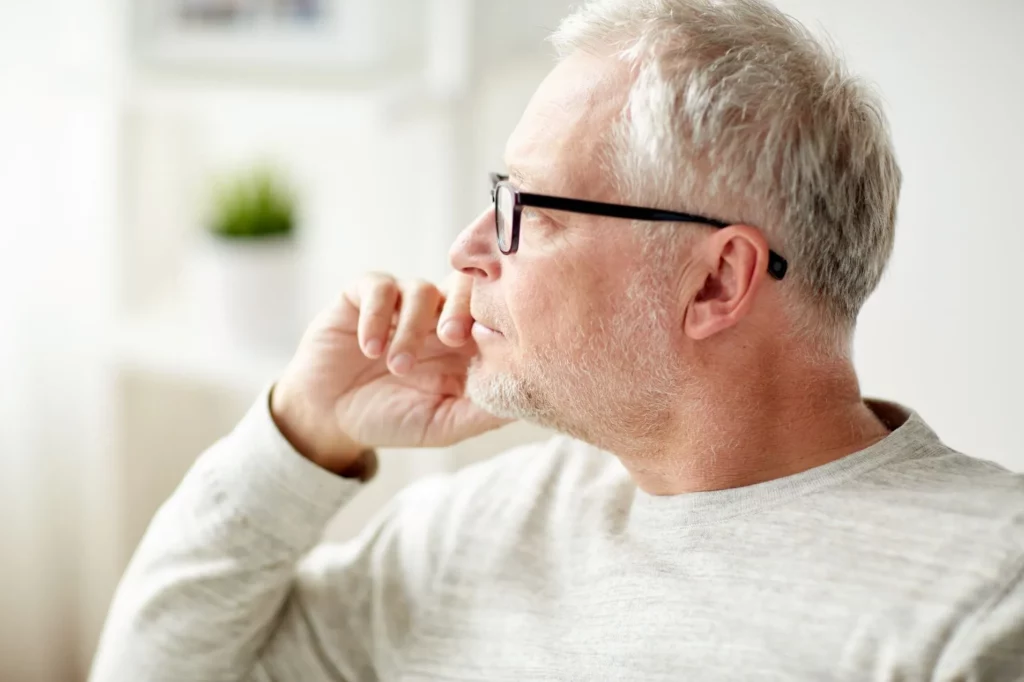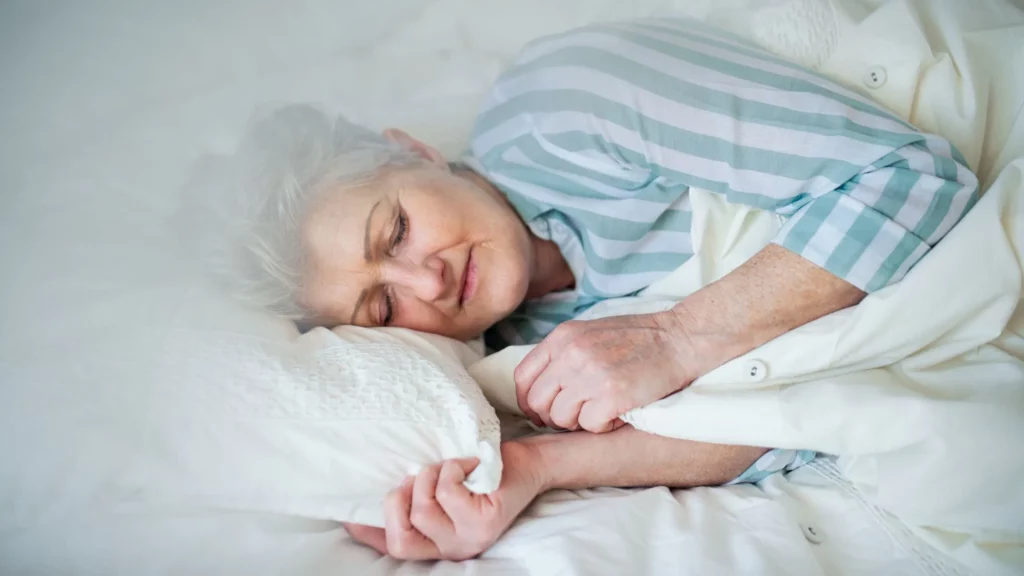Key Takeaways
- Inspire therapy is a breakthrough treatment for those with obstructive sleep apnea who struggle with CPAP machines.
- The treatment involves a small device implanted during a short surgical procedure, which stimulates the airway muscles to keep them open during sleep.
- Studies show a significant reduction in sleep apnea events and improvements in quality of life for patients using Inspire therapy.
- Candidates for Inspire therapy typically have moderate to severe obstructive sleep apnea and have not found success with CPAP.
- Inspire therapy offers a less intrusive, more comfortable alternative to traditional sleep apnea treatments, potentially transforming the sleep and overall health of patients.
Struggling with sleep apnea is a challenge that millions face nightly. The traditional go-to has been the CPAP machine, but it’s not the only option. There’s a newer, innovative solution that’s changing lives: Inspire therapy. This treatment could be the answer for those who’ve found CPAP machines cumbersome and ineffective.
Say Goodbye to Restless Nights: The Power of Inspire Sleep Apnea Treatment
Sleep is crucial for health and well-being, but for many, it’s a battle against obstructive sleep apnea (OSA). OSA can cause snoring, disrupted sleep, and can lead to serious health issues if left untreated. But there’s good news! Inspire therapy offers hope and better sleep to many who suffer from this condition.
A Breakdown of Inspire’s Revolutionary Approach
So, what exactly is Inspire therapy? In essence, it’s a small device implanted under the skin of the neck and chest. It monitors your breathing while you sleep and delivers mild stimulation to key airway muscles, ensuring they remain open. It’s controlled by a handheld remote, making it simple to use.
Inspire therapy is designed for those who haven’t had success with CPAP (Continuous Positive Airway Pressure). It’s a game-changer for patients who are looking for a more comfortable and convenient way to manage their sleep apnea.
Transformative Patient Outcomes and Success Stories
Real people have seen real results. Take John, for example, who had struggled with CPAP for years before turning to Inspire therapy. He now enjoys full nights of uninterrupted sleep and has newfound energy during the day. His story is one of many that illustrate the life-changing impact of this treatment.
And the success rates are compelling. Clinical studies have shown that Inspire therapy can significantly reduce sleep apnea events and, most importantly, improve the quality of life for patients. This is a profound leap forward in sleep medicine.
Imagine waking up feeling refreshed and ready to tackle the day. That’s the reality for many who have experienced the benefits of Inspire therapy. This treatment has shown remarkable results in improving sleep quality and overall quality of life for those with obstructive sleep apnea.
Real Results: Patient Experiences with Inspire Therapy
Patients who have made the switch to Inspire therapy often report a stark contrast in their sleep quality compared to when they were using a CPAP machine. The difference lies in the technology’s approach to keeping the airways open without the need for a mask or hose.
Before and After: Comparing Sleep Quality
Studies have consistently demonstrated that patients using Inspire therapy experience fewer sleep apnea events throughout the night. This means less waking up, less snoring, and more restorative sleep. The impact on daytime alertness and energy levels is substantial.
Personal Testimonies: The Life-Changing Impact of Inspire
“Before Inspire, I was exhausted all the time, and my snoring was so bad it kept my wife awake. Now, we both sleep through the night. It’s been a total turnaround for us.” – Michael, Inspire Therapy Patient
Stories like Michael’s are common among Inspire therapy users, who often express a newfound zest for life thanks to better sleep. Partners of patients also report significant improvements, especially when it comes to snoring reduction, which enhances the sleep quality for both.
Eligibility and Consideration for Inspire Therapy
While Inspire therapy has proven to be a fantastic solution for many, it’s not suitable for everyone. It’s specifically designed for individuals who have moderate to severe obstructive sleep apnea and have not had success with CPAP therapy.
Is Inspire Right for You?
To be considered for Inspire therapy, you should meet certain criteria:
- You must have moderate to severe obstructive sleep apnea.
- You’ve tried CPAP but haven’t been able to tolerate or benefit from it.
- A sleep study confirms your condition and that other treatments have not been effective.
If you tick these boxes, Inspire therapy could be the solution you’ve been searching for. It’s a decision that could dramatically improve your sleep and, by extension, your overall health.
Understanding whether Inspire therapy is right for you involves a comprehensive evaluation by a sleep specialist. This includes an examination of your sleep study results, medical history, and a physical examination of your airway.
Navigating the Path to Inspire Therapy: A Step-by-Step Guide
Choosing Inspire therapy begins with a conversation with your doctor. If you’re a candidate, you’ll be referred to a specialist for further assessment. Here’s what to expect:
- Consultation with a sleep specialist or an ear, nose, and throat (ENT) doctor.
- Detailed examination and possibly additional sleep studies.
- Discussion about the risks and benefits of Inspire therapy.
- If you’re a candidate, scheduling the procedure for device implantation.
- Follow-up visits to adjust the device settings for optimal performance.
Embarking on the Inspire journey is straightforward when you have the right information and a supportive medical team.
Making the Choice: Why Opt for Inspire over Traditional Treatments?
Choosing between Inspire and traditional treatments like CPAP comes down to personal needs and preferences. While CPAP is effective, it’s not always the best fit for everyone due to comfort issues or lifestyle incompatibilities.
Comparing Effectiveness: Inspire vs. CPAP
Inspire therapy is comparable to CPAP in reducing the number of sleep apnea events. However, Inspire has the added advantage of being less invasive and more discreet, making it an attractive alternative for those who find CPAP challenging to use every night.
Living with Inspire: The Lifestyle Benefits
Life with Inspire therapy means no more masks, hoses, or noisy machines. It’s a more natural way to manage sleep apnea, and it fits seamlessly into your life. Here are some of the benefits:
- It’s almost invisible, with no external signs that you’re using a sleep apnea treatment.
- There’s no daily maintenance; simply use the remote to turn on the device at bedtime.
- You can travel easily without carrying extra equipment.
- Bed partners are happier due to the reduction in snoring.
With these lifestyle perks, it’s no wonder many are making the switch to Inspire therapy.
Wrapping It Up: The Bright Future of Sleep Apnea Treatment
Inspire therapy is at the forefront of a new era in sleep apnea treatment. With its user-friendly approach and positive patient outcomes, it’s paving the way for more innovative treatments in the future.
As technology advances, we can expect even more personalized and effective solutions for sleep apnea. Inspire therapy is just the beginning.
- Patients report high satisfaction with Inspire therapy.
- The treatment is minimally invasive and can be a one-time procedure.
- Ongoing research and development promise to enhance the effectiveness of Inspire and similar treatments.
If you’re ready to take the first step towards better sleep, talk to your doctor about Inspire therapy. It could be the key to unlocking a night of restful sleep and invigorating days.
Advancements in sleep apnea treatment, like Inspire therapy, have transformed countless lives, offering an alternative to those for whom traditional methods have fallen short. The future looks bright with the promise of further innovation, improving the lives of those with sleep apnea.
Advancements and Innovations on the Horizon
The field of sleep medicine is continuously evolving, with new research and technology on the rise. Inspire therapy itself is a testament to this progress, offering a less intrusive and more user-friendly approach to managing sleep apnea. As we look ahead, we anticipate advancements that will make treatments even more tailored and effective for individual needs.
Getting Started on Your Journey to Better Sleep
Embarking on the path to better sleep begins with understanding your options and consulting with a sleep specialist. If you’re considering Inspire therapy, a thorough evaluation will determine if it’s the right fit for you. With the right treatment, restful nights and energetic days can become your new normal.
Frequently Asked Questions (FAQ)
How does Inspire compare to other sleep apnea treatments in terms of success rates?
Inspire therapy has been clinically proven to be effective for patients with moderate to severe obstructive sleep apnea who are unable to benefit from CPAP. Success rates for Inspire are comparable to CPAP, with many patients experiencing a significant reduction in sleep apnea events and an improvement in quality of life.
What does the recovery process look like after getting Inspire treatment?
The recovery process after Inspire implantation is relatively swift. Patients typically return home the same day and can resume non-strenuous activities within a few days. Full recovery and activation of the device usually occur within a few weeks, allowing patients to start experiencing the benefits of the treatment.
Can Inspire therapy be used for all types of sleep apnea?
Inspire therapy is specifically designed for obstructive sleep apnea, which is caused by a blockage of the airway during sleep. It is not indicated for central sleep apnea, which involves the brain’s ability to signal the muscles to breathe, or complex sleep apnea, which is a combination of obstructive and central sleep apnea.
Are there any lifestyle changes required to complement Inspire therapy?
While Inspire therapy works independently, adopting a healthy lifestyle can enhance its effectiveness. This includes maintaining a healthy weight, avoiding alcohol before bedtime, and sleeping on your side. These changes, along with Inspire therapy, can contribute to better sleep quality.
How long does it take to see results after starting Inspire therapy?
Most patients notice improvements in their sleep quality soon after the Inspire device is activated, which is typically a few weeks post-surgery. However, it may take some time to adjust the settings for optimal results, with regular follow-up appointments necessary to monitor progress.
With Inspire therapy, we’re not just talking about a good night’s sleep; we’re talking about a better quality of life. If you’re struggling with sleep apnea and haven’t found relief with CPAP, Inspire could be the solution you’ve been searching for. Reach out to your doctor and explore the possibility of a future filled with restful nights and vibrant days.







